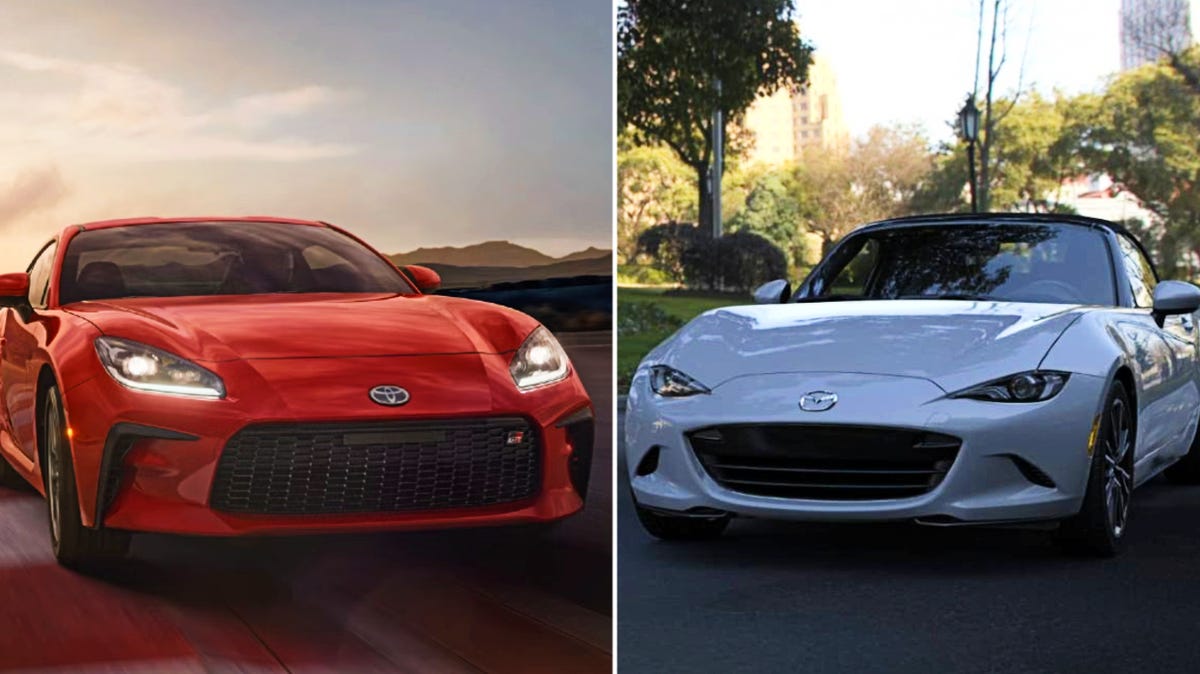Toyota and Mazda currently produce two of the most popular affordable sports cars. What would happen if the two Japanese automakers worked together?
Toyota’s GR86 sports car starts under $31,000. It’s lightweight, cheaper than the average new vehicle, and fun to drive. Similarly, Mazda produces a cheap and enjoyable sports car model under $30,000, the Miata. The two Japanese powerhouses are collaborating on a new sports car project that will benefit both companies and consumers.
Reports from Japan’s Best Car magazine say Toyota and Mazda could be co-developing the next generation of Toyota GR86 and Mazda MX-5 Miata sports cars. Chief engineers from Mazda have already been sent to Toyota City, (a city in the Aichie Prefecture of Japan), to work on a new sports car using the Miata “as a starting point”, according to Forbes.
The Mazda Miata has amassed a huge global following since its 1989 release. Decades later, the affordable roadster is a sports car staple because of its driving dynamics and availability to average car buyers. Toyota has a strong reputation of its own for building sports car models that don’t break the bank.
Shopping for a sports car: You can buy a special edition 2025 Mazda MX-5 Miata for under $40K. Is it worth getting?
Today, several automakers are collaborating to produce automotive nameplates they may not have been able to develop alone. Toyota and Subaru joined forces on the Toyota bZ and Subaru Solterra electric SUVs. Honda and GM collaborated on the Honda Prologue and Chevrolet Equinox EV. When major automakers work together, hugely succesful nameplates can be created.
Collaboration doesn’t guarantee success, but Toyota and Mazda aren’t just working on some unknown new vehicle nameplates. They’re working on sports car icons that have the opportunity to get even better with input from each respective company.
U.S. News & World Report gave the Toyota GR86 and Mazda MX-5 Miata scores of 8.7 or higher out of 10, acknowledging the vehicles as two of the best new sports cars on the market. A collaboration could help both companies address shortcomings, bringing them even closer to perfection.
Though no news has surfaced regarding how the two companies intend to utilize eachother’s resources, there are some changes to both models that are extremely likely to take place, given the histories of each brand. Drivers can expect some design tweaks that will keep the GR86 and Miata affordable, lightweight and reliable over time.
Toyota has expertise producing long-lasting vehicles, and it can share design information with Mazda to bring longevity elements to the Miata’s design. Another change we can anticipate is a potential powertrain upgrade.
Toyota and Mazda have been producing more hybrid and mild hybrid vehicles in recent years. A new generation of Toyota GR86s and Mazda Miatas could use a mild hybrid powertrain for a higher power output and increased efficiency with the inclusion of electric motors.
The saying “if it ain’t broke, don’t fix it” can apply to these two affordable sports cars, but this collaboration has huge potential. One thing consumers can be certain of is that Toyota and Mazda’s new co-developed sports cars will be fierce competitors in their segment.












